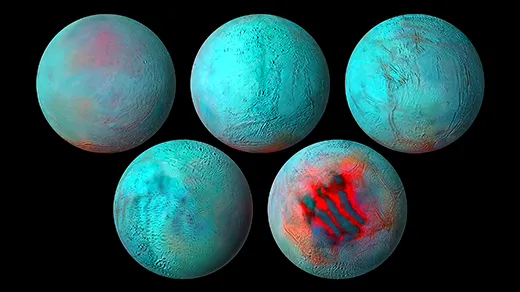Exploring the mysteries of celestial bodies has always fascinated scientists and astronomers. Among these enigmatic entities are dark and frozen moons, which defy expectations by harboring vast oceans beneath their icy surfaces. Despite their inhospitable environments, these moons possess unique conditions that allow for the existence of liquid water.
A Surprising Revelation: Oceans in Darkness
Contrary to what one might expect, several moons within our solar system have been found to contain hidden oceans despite being shrouded in darkness. These include Europa, a moon orbiting Jupiter, and Enceladus, a satellite of Saturn. The presence of subsurface oceans on these distant worlds challenges conventional wisdom about habitable zones.
The Role of Tidal Heating
Tidal heating is believed to be the primary mechanism responsible for maintaining liquid water on these dark and frigid moons. As they orbit their parent planets, gravitational forces cause significant flexing and stretching within the moon’s interior. This constant tidal stress generates heat through frictional forces that prevents the ocean from freezing solid.
An Unexpected Source: Geothermal Activity
In addition to tidal heating, geothermal activity plays an unexpected role in sustaining subterranean oceans on these mysterious moons. Scientists have discovered evidence of hydrothermal vents on both Europa and Enceladus – similar to those found deep within Earth’s own oceans – which release warm mineral-rich fluids into the surrounding waters.
Unlocking Secrets Beyond Our Reach
The existence of liquid water beneath the icy crusts opens up intriguing possibilities for extraterrestrial life forms beyond Earth as we know it. These hidden oceans provide protected environments where essential chemical reactions could occur over extended periods—a crucial factor for supporting potential life.
Conclusion
The discovery of oceans on dark and frozen moons challenges our understanding of habitable zones and the conditions necessary for life. Tidal heating and geothermal activity have emerged as key factors in maintaining liquid water beneath these inhospitable surfaces. As we continue to explore the mysteries of our universe, these enigmatic moons offer tantalizing clues about the potential for extraterrestrial life.

